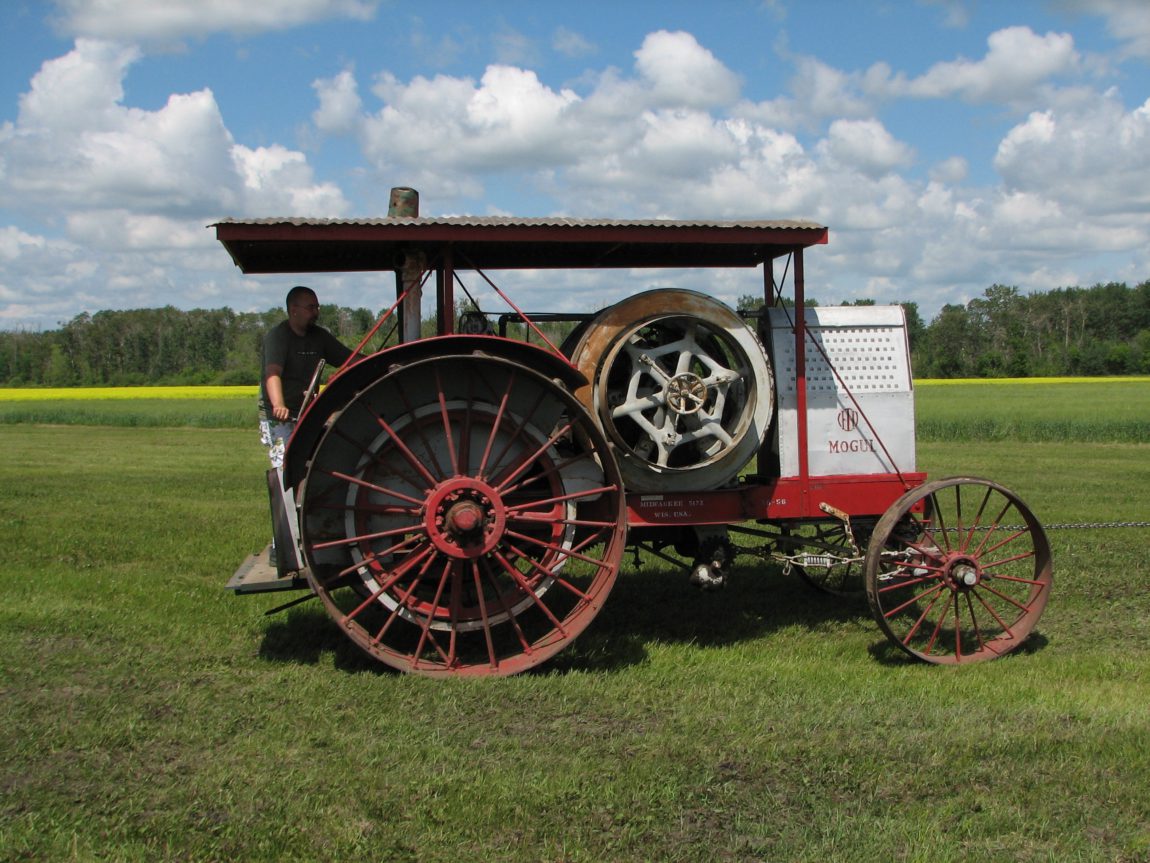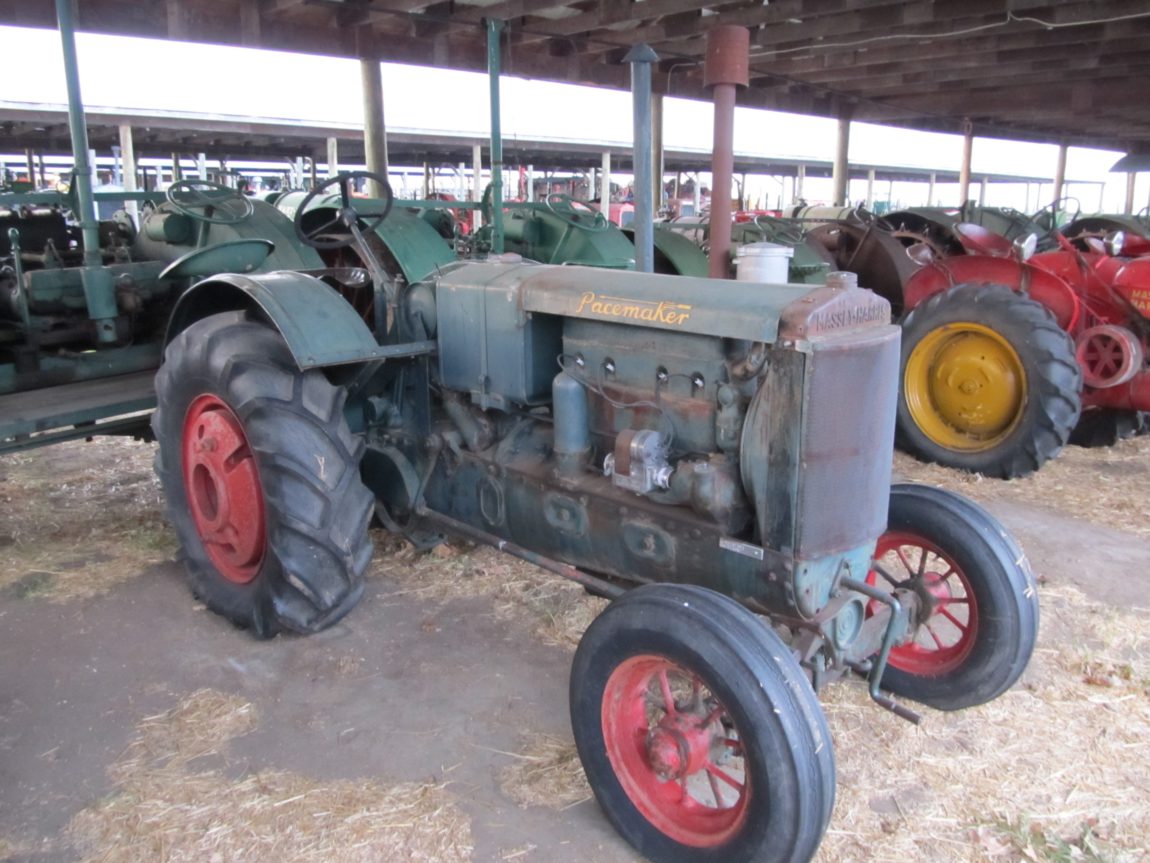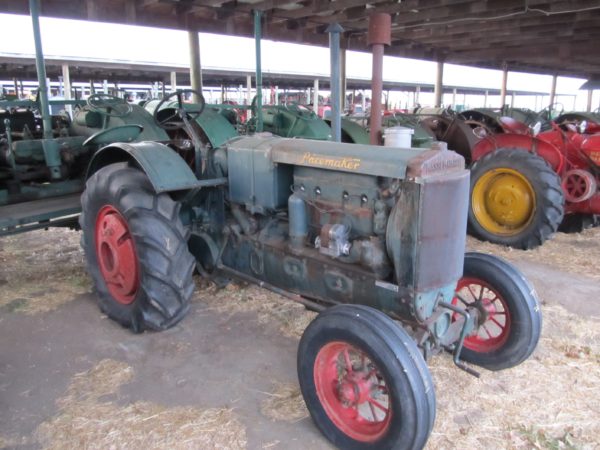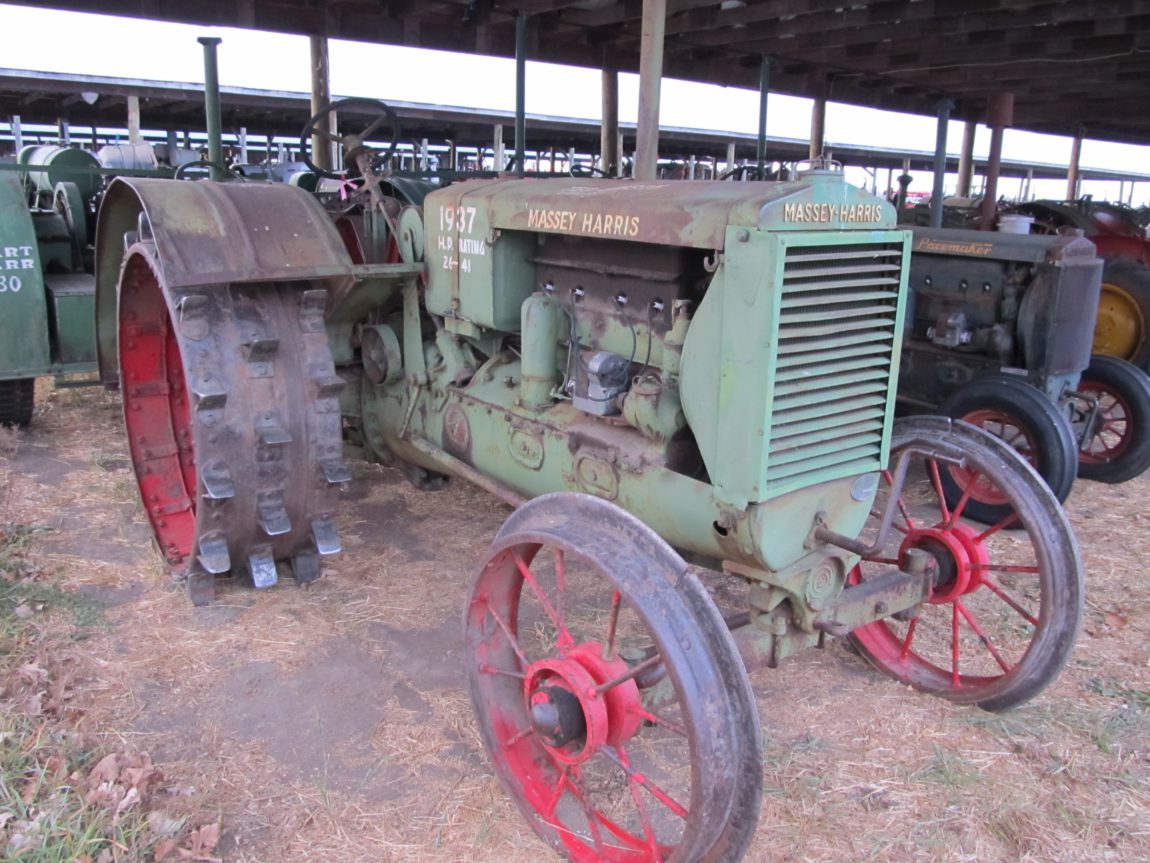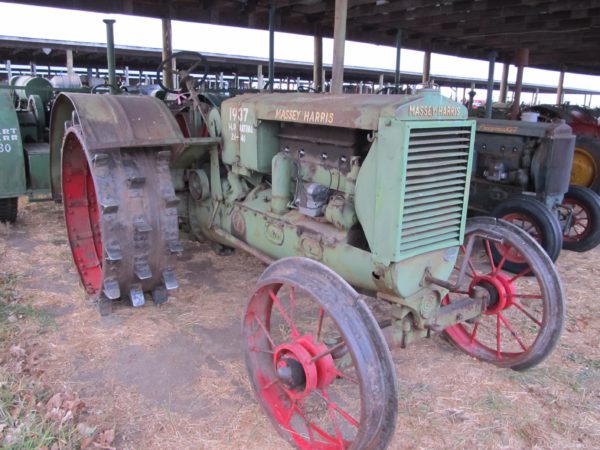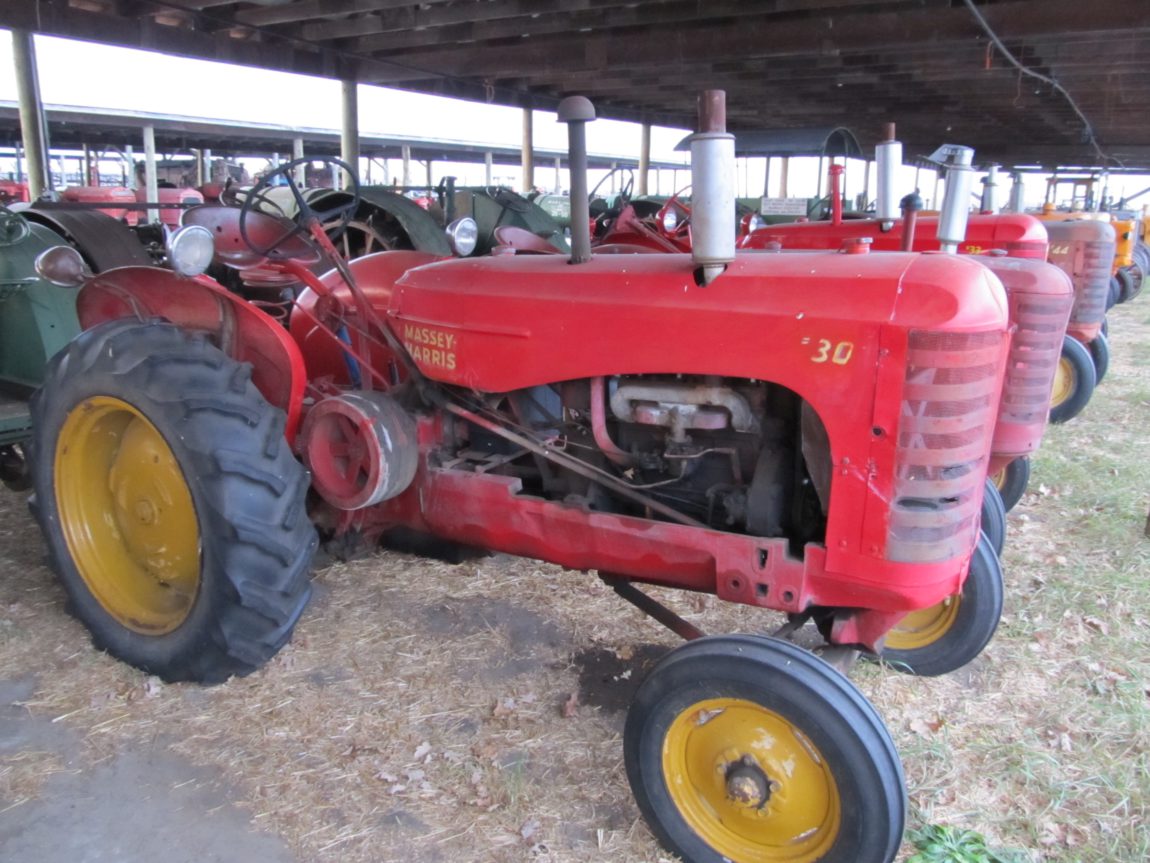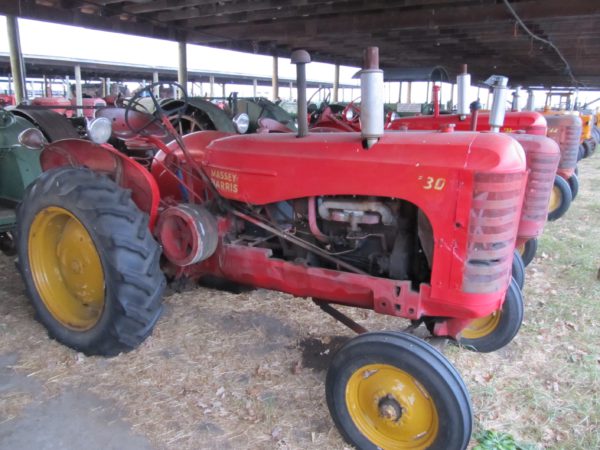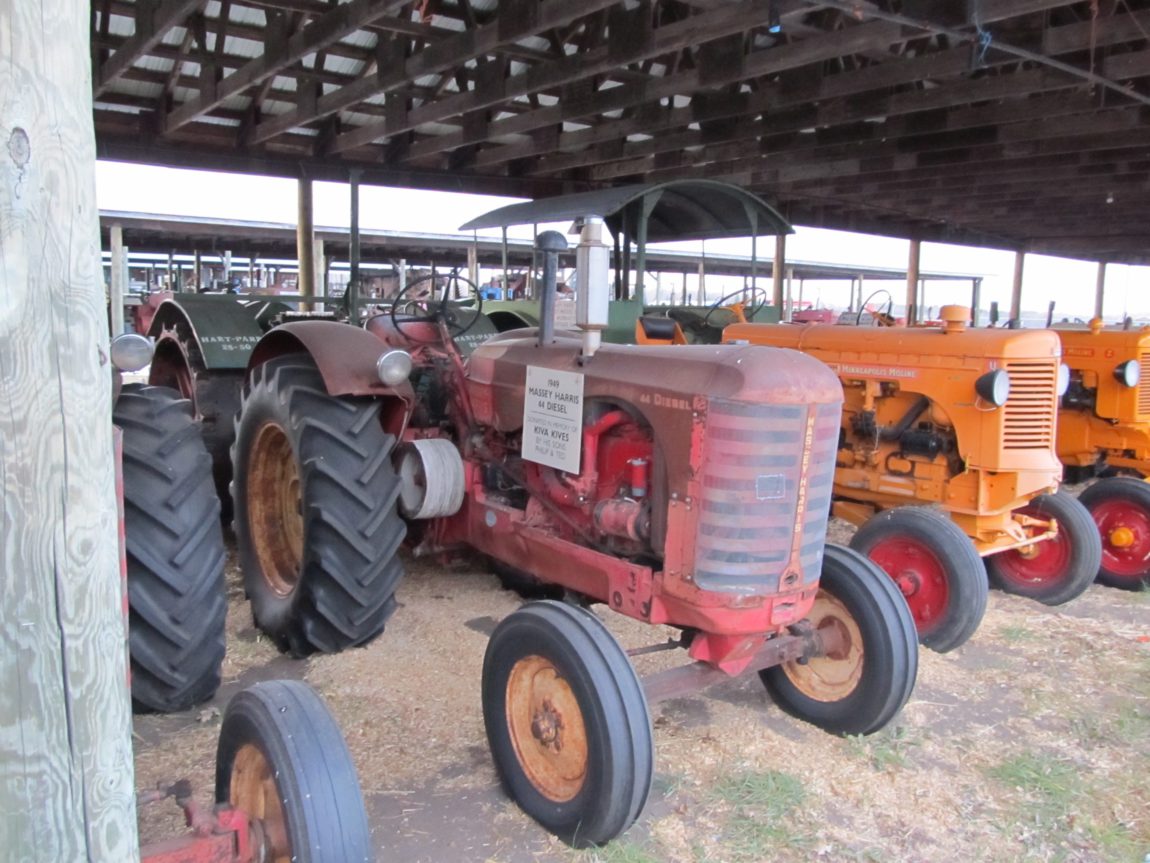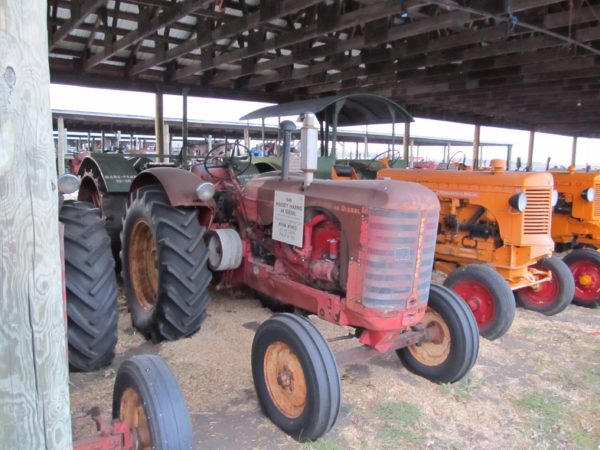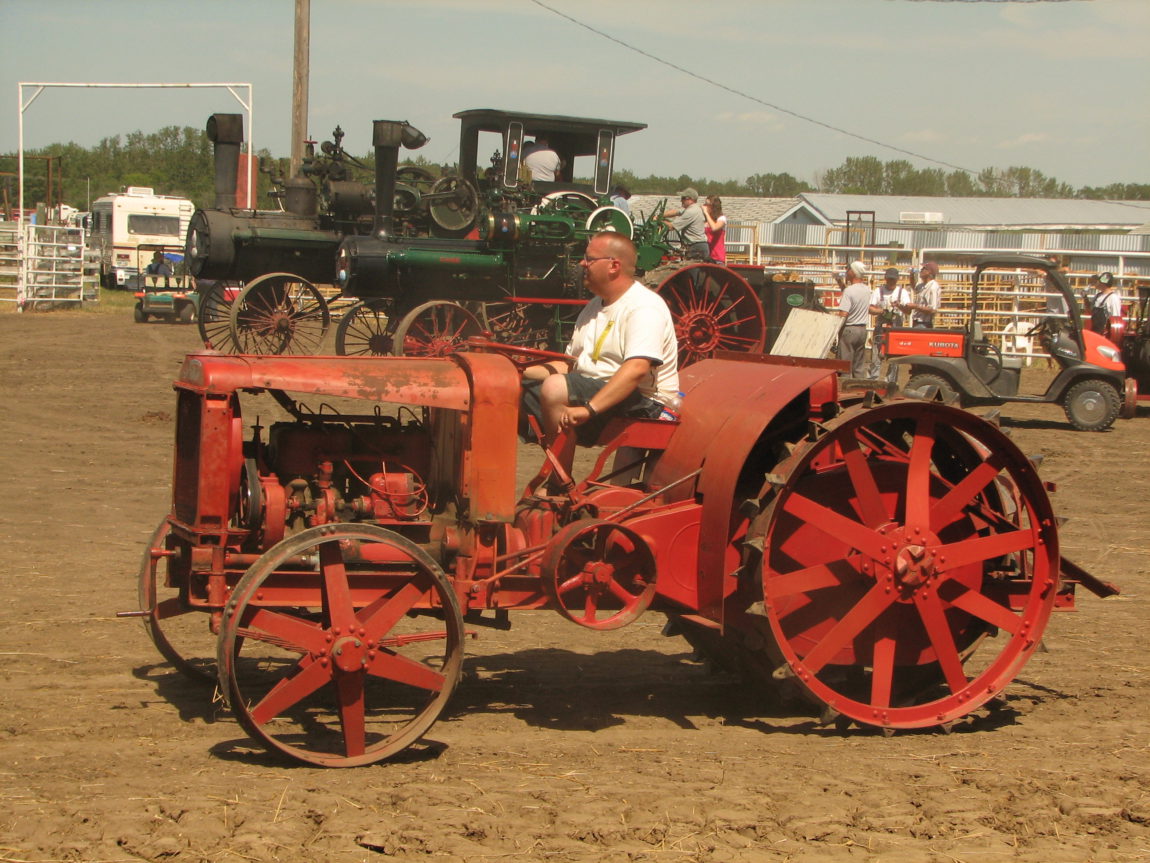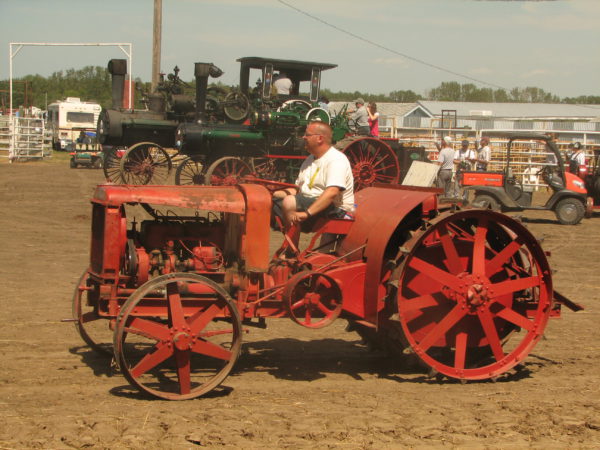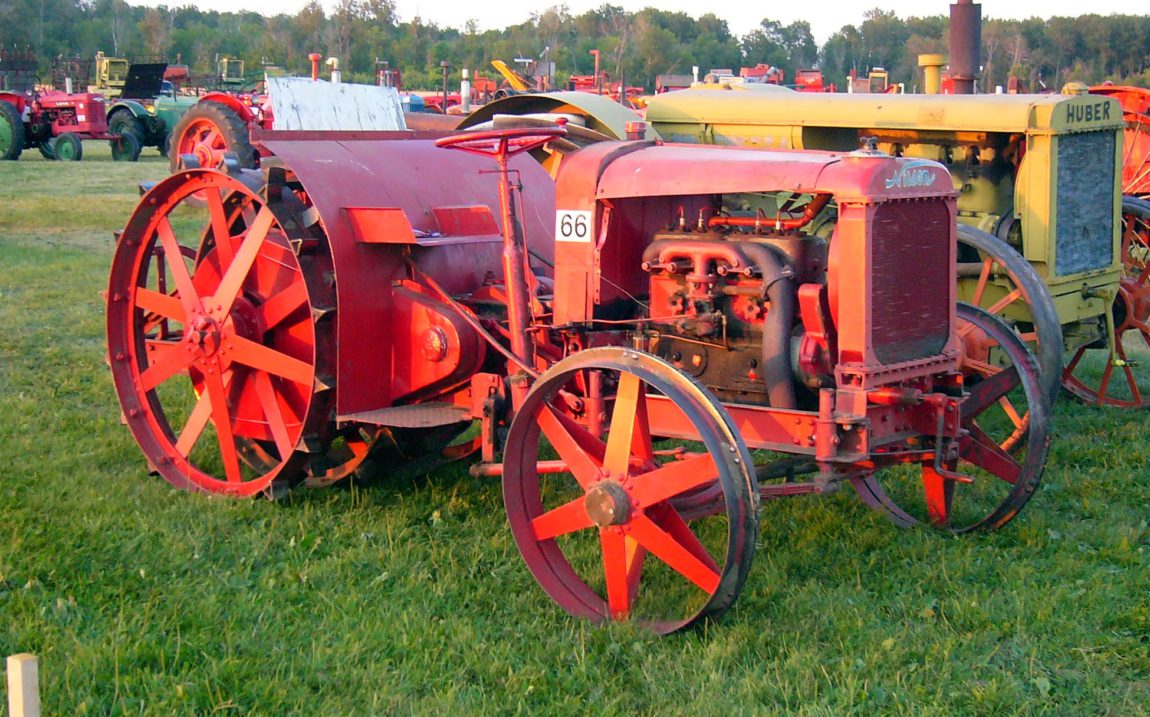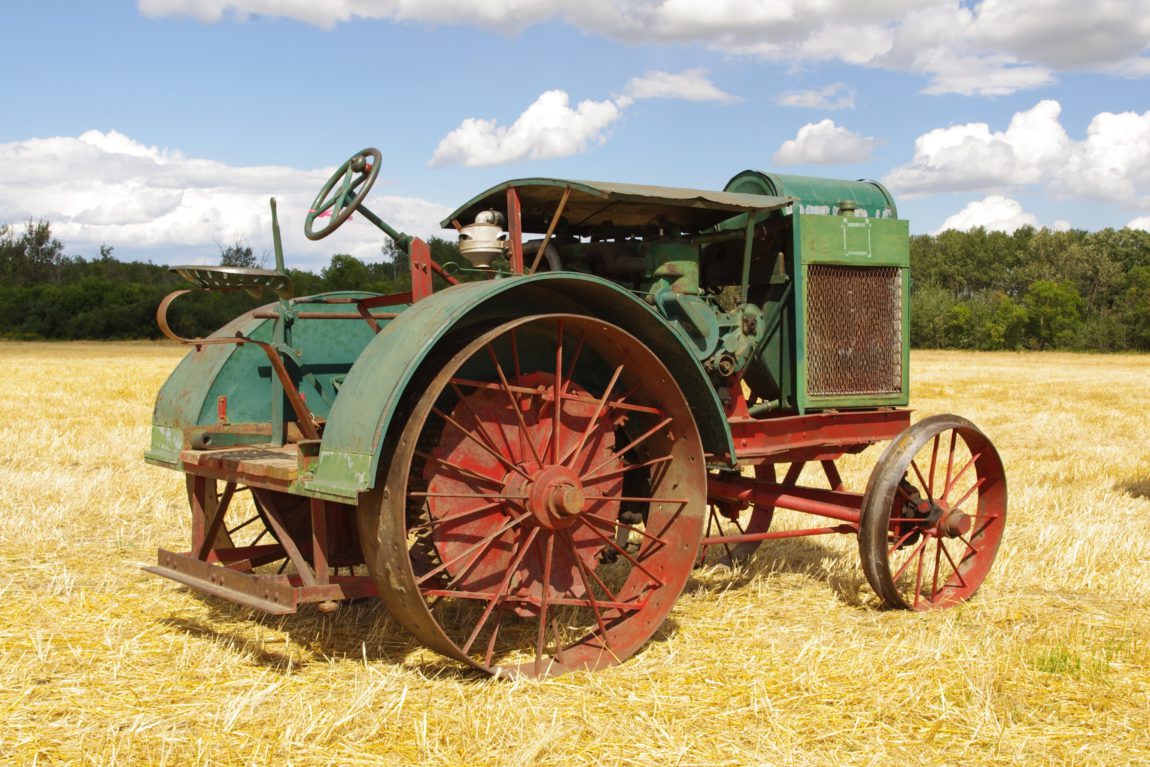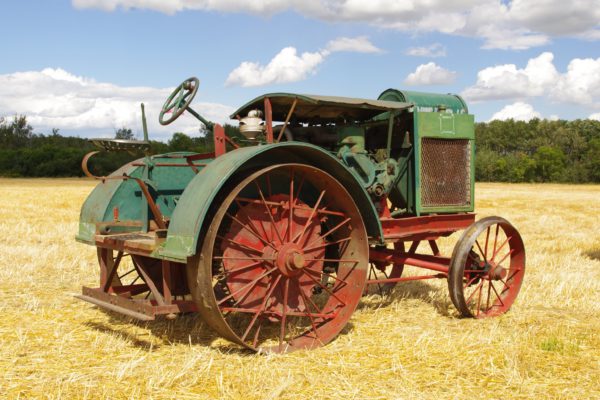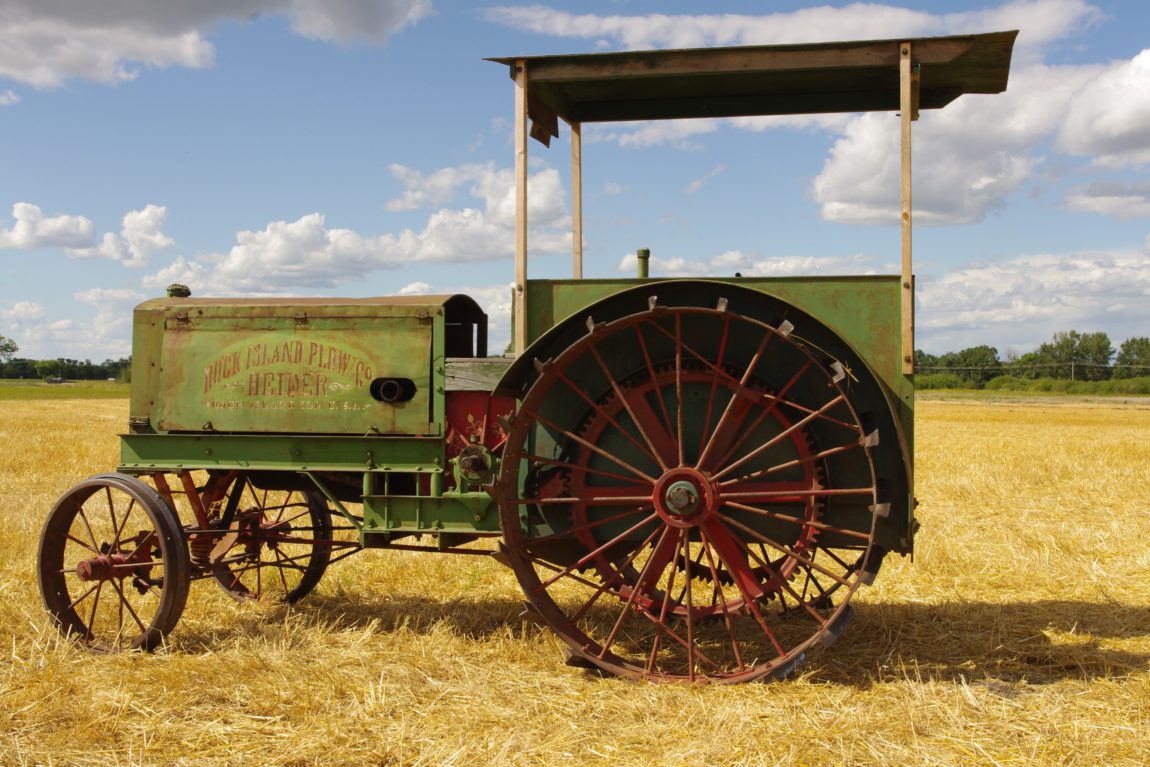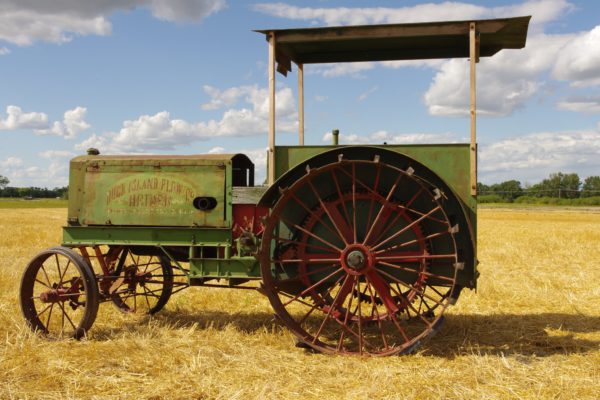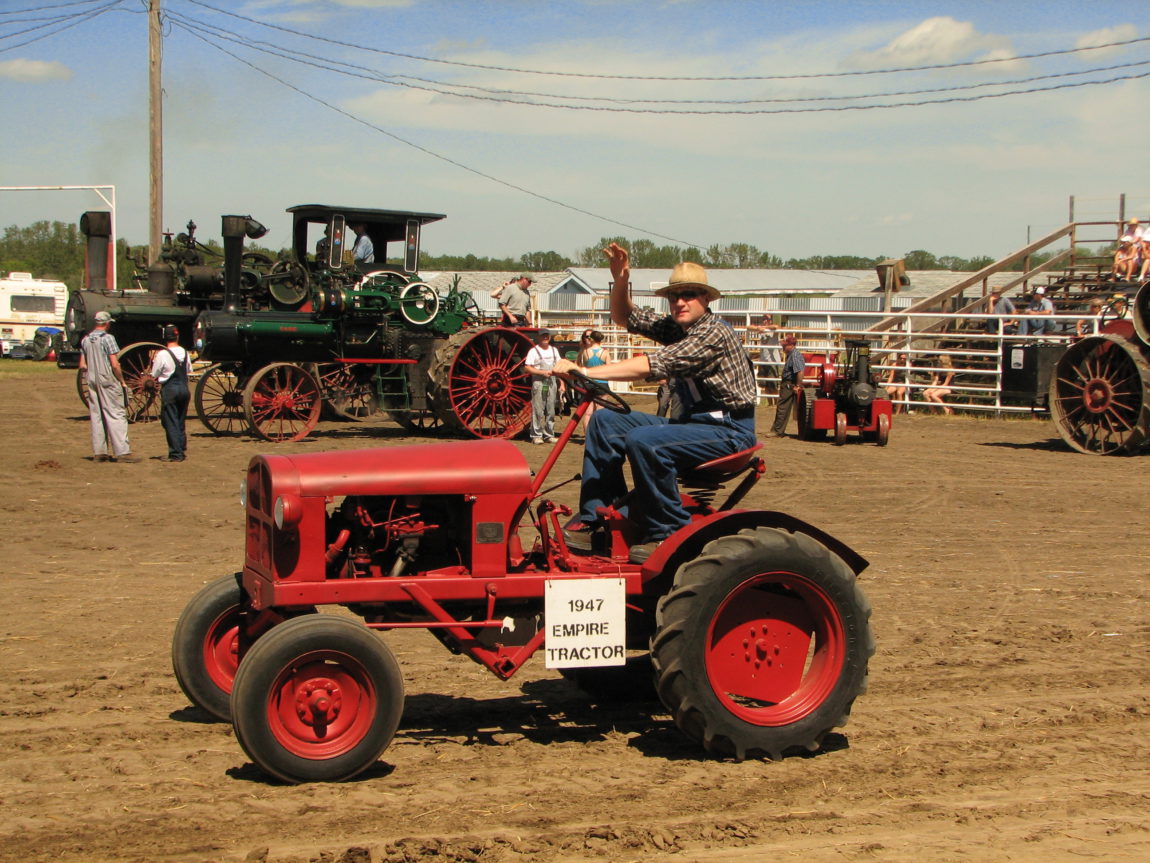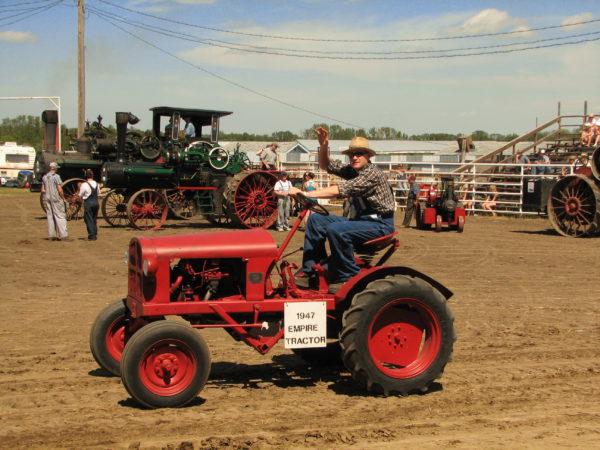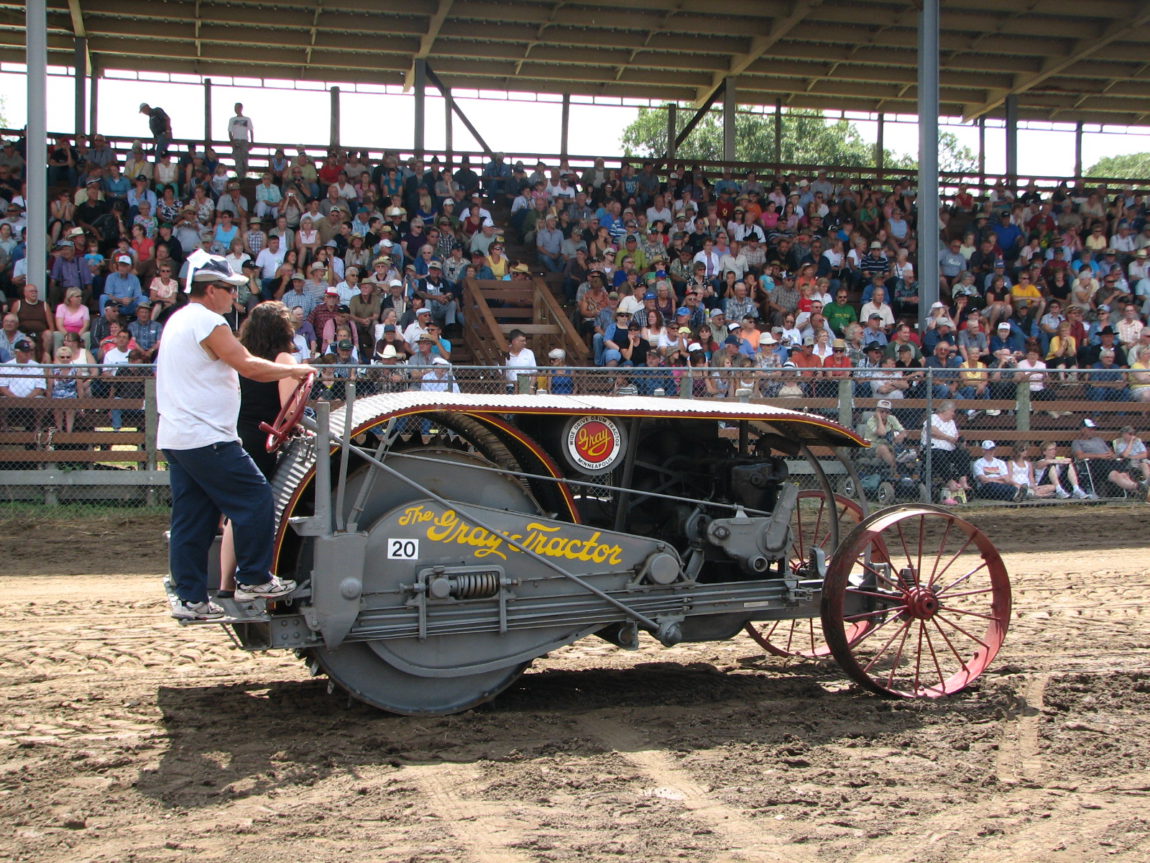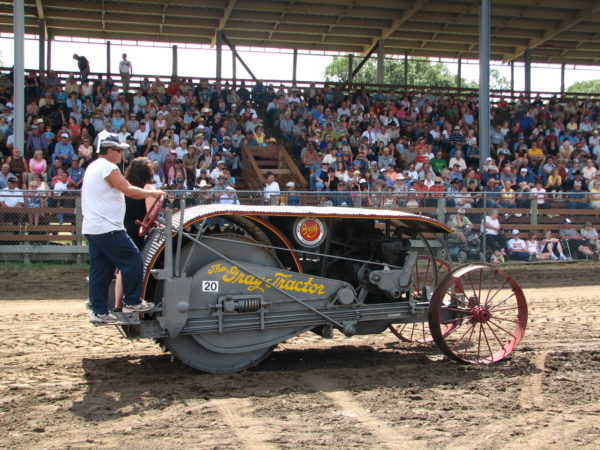
The Manitoba Agricultural Museum holds an International Harvester Company (IHC) Mogul Type C 25 Horsepower engine in its collection.
The International Harvester Co. was formed in Milwaukee, Wisconsin in 1902 by a merger of the McCormick Harvesting Machine Co., the Deering Harvester Co. and a number of smaller companies. While both McCormick and Deering produced successful binders, they decided that rather than continue to compete with each other, they were better off merging. In this process a number of smaller manufacturers were also folded into the emerging company. The result was IHC which rapidly transformed the farm machinery business as this company offered an almost complete line of farm machinery for sale through their dealers. This was revolutionary as it meant that a farmer could, if the farmer wanted, deal with only one dealer. Previous to this point manufacturers built a small number of types of equipment and sold this equipment through dealers who also sold equipment from other manufacturers. Sometimes the same dealer handled competing lines. To complicate matters, some manufacturers entered into agreements with other manufacturers to handle their equipment. Sometime times these arrangements extended across all of the geographic areas serviced by the manufacturer. In other agreements, the agreement just covered one area. It was rare that one dealer handled all equipment that a farmer may need resulting in the farmer having to visit another dealer and perhaps being “stolen” away. Having a dealership which offered all the equipment that a farmer needed would avoid this issue.
As well having an almost complete line of equipment to sell resulted in IHC being less exposed to downturns in the equipment market. Usually some portion of IHC’s equipment line was selling, generating revenue for IHC and the dealer.
IHC was relatively well financed and was in a better position to offer financing to farmers wanting to purchase IHC equipment. Other manufacturers were not in this position and were prone to encountering serious financial difficulties if and when the agricultural markets downturned resulting in farmers not being able to meet their debt obligations. It should be noted that banks at this time were very conservative and often did not engage in farm lending. If a farm machinery company wanted to sell equipment, it often had to be prepared to finance this equipment
Other manufacturers realized that they had to match IHC and so also began to merge or acquire other companies in order to obtain a full line of equipment.
IHC did not manufacture a line of steam engines and stayed out of this segment of the farm machinery business. However IHC did enter into stationary gasoline engine manufacture and sales. IHC got into the business of manufacturing tractors in 1906. The first IHC tractor consisted of an IHC “Famous” single-cylinder stationary engine mounted on a Morton power chassis and featured friction drive to the wheels. As the IHC “Famous” engine came in different sizes – 10, 12, 15 and 20 horsepower, the first IHC tractors also came in these sizes.
The Morton power chassis was produced by Samuel Morton and was a four wheeled chassis with a power train and steering to which someone could add an internal combustion engine to make a tractor. Morton chassis were used by a number of early experimenters with tractors.
The friction drive used in the Morton chassis proved unsuitable under heavy load, and so was replaced by gear drive in the 1907 Type A model. The Type B superseded the Type A in 1908. Numerous modifications were made to the Morton chassis for the Type C tractor of 1909. “Mogul” name was applied to this tractor and was available in 20 and 25 horsepower versions.
IHC, by 1910, had two lines of tractors, the Mogul and the Titan, both built to completely different designs. In general the Mogul designs used a two cylinder opposed cylinder design while the Titan designs used an inline cylinder engine with the cylinders lying on their side. The Mogul tractors were built in IHC’s Chicago plant while Titans were built in IHC Milwaukee plant.
The Mogul line was sold the McCormick Dealers while the Titan was sold by the Deering dealers. Even through the two companies had amalgamated, IHC felt that many farmers were so loyal to one company or the other that IHC should maintain the two dealer networks. This lasted until 1920 when IHC realized that maintaining two lines of equipment was expensive and that sometimes the McCormick and Deering dealers were in competition for the same sale. The dealership network was amalgamated. In towns with both dealers, the strongest of the McCormick or Deering dealer in a town was chosen to be retained. The equipment lines were amalgamated as well and the McCormick-Deering line was born.



